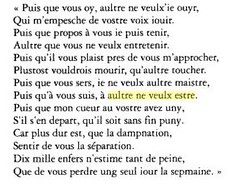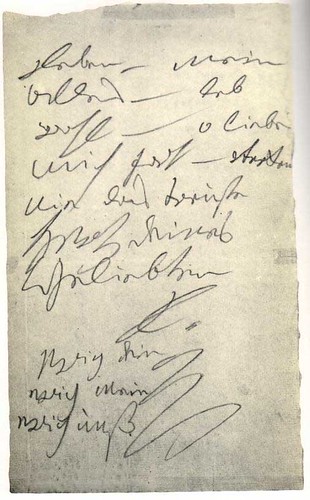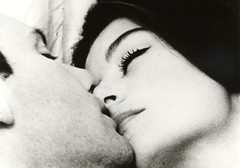I believe it was Dutch gay fiction writer Gerard Reve who said: “Gij zult het cliché niet schuwen”, which translates in English as “Thou shalt not eschew the cliché.” It is this phrase which has provided me with a rationale for liking stereotypes, archetypes and tropes. For today’s cliché I’ve chosen the sexually frustrated woman. There are two species of sexually frustrated women, the single female (also known as the spinster) and the one in a relationship. We will focus on the second variety as much more information – albeit still limited in comparison to the average frustrated chump – about her is available.
Some quick and dirty research over the course of an hour or so yields our first stereotype of the sexually frustrated woman in Egyptian mythology in the persona of Nephthys. Closer to home and our present age we find her most evidently in Lady Chatterley’s Lover, the story of a woman who gets a lover because of her husband’s impotence (a similar plot element is found in von Trier’s Breaking the Waves).
To illustrate her today, I resort to Brian de Palma 1980 film Dressed to Kill and the character of Kate Miller played by Angie Dickinson.
Kate is a married housewife and mother who has just tried to seduce her therapist (played by Michael Caine) who rejects her advances. Later that day as shown in the majestic scene above, we find Kate in the Metropolitan Museum of Art (one of de Palma’s body doubles: the Philadelphia Museum of Art is provided its interiors) and for ten minutes without any dialog she has an unexpected flirtation with a mysterious stranger. Kate and the stranger “stalk” each other through the museum until they finally wind up outside, where Kate joins him in a taxi cab. They immediately begin to have sex right there in the cab, and their experience continues at his apartment.
Let me share that scene with you. One of the most erotic scenes in 20th century sinema, without an inkling of nudity:
[Youtube=http://www.youtube.com/watch?v=vIaUt5KcxzI]
However, the sexually frustrated housewife – like many “final girls” before and after her pays dearly for her transgression. She discreetly leaves while the man is asleep, but not before she rifles through some of his papers and discovers that he has a sexually transmitted disease. Mortified, Kate leaves the apartment and gets in the elevator, but on the way down she realizes that she’s left her wedding ring on the stranger’s nightstand. She rides back up to retrieve it, but the elevator doors open on the figure of a large, imposing blonde woman in dark sunglasses wielding a straight razor. She slashes Kate to death in the elevator.
Unsolved trivia: I’d liked to find the titles of the two first paintings (the one with the woman’s face and the one with the monkey) Kate is enjoying while she is sitting on the bench in Philadelphia Museum of Art. If you know, let me do to.
This film is the 45th entry in the category World Cinema Classics.








